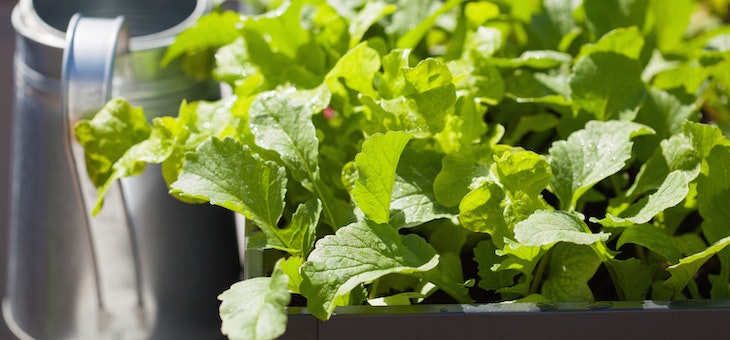With outdoor space at a premium, we are increasingly growing vegies in pots, ranging from tumbling tomatoes and cut-and-come again lettuces, to peppers, herbs and even potatoes.
With more people living in spaces with limited outdoor access, the interest in container growing is rising.
But if your efforts to grow veg in pots have resulted in poor harvests or bland flavour and you don’t think it’s worth the time, think again. With a little forethought, you can make your small space truly bountiful, says soil scientist and nutritional gardening expert Dr Nigel Bending.
“Container growing needs careful thought to be a success, considering what to grow, as well as how to grow it,” says Dr Bending, creator of Ergrownomics, a compact growing system that increases the number of vegetables and herbs you can produce in a small space.
Here, experts outline some of the common mistakes people make when growing in containers – and how to resolve them.
1. Not making your planters deep enough
Soil planters should be a minimum depth of 250mm – and preferably 350mm – to allow the widest range of crops to be grown, including carrots and tomatoes, Dr Bending recommends. Deeper soil will be cooler, which can assist in preventing leaf crops from bolting (running to seed) and root crops becoming pithy.
2. Letting them dry out
Container crops can be more vulnerable to drying out than those grown in the ground, especially if the pot is small and therefore there is less soil or compost to retain moisture. The Royal Horticultural Society advises gardeners to ensure a regular water supply, avoiding floods and droughts.
3. Letting invasive herbs take over
If you are growing herbs in a container, make sure you sow invasive types – like mint – separately from the rest. Mint should be grown alone in its own pot, or if you want to plant it with other herbs, confine it to its own container when you put it in a mixed arrangement. That way, the roots won’t overwhelm other less vigorous herbs, and it won’t take over.
4. Not considering planting flowers with crops
Containers in which you are planting veg can also look really pretty if you mix them up with flowers, and it may give you a richer harvest. Sweetcorn plants, for instance, can be grown in a group in a large container, as they rely on the wind to pollinate them. But you could underplant them with nasturtiums, which make a spicy addition to salads, says TV and radio gardening expert Christine Walkden, in her book No-nonsense Container Gardening.
From my own experience, if you plant climbing beans with sweet peas, you get not only a prettier display, but also a better harvest of beans, as pollinating insects will be attracted to the sweet pea flowers and, in turn, the bean flowers.
5. Poor spacing
If you space your brassicas too close together in your container, it may have a detrimental effect on your crop. Ms Walkden advises gardeners to sow or buy patio or container brassicas, specially developed by plant breeders.
You may be better off growing just one beautiful dense cabbage head in a classic terracotta pot. Other brassicas to try include calabrese or green sprouting broccoli, which is fast growing and produces heads 80-90 days after sowing directly in a container, she suggests.
Compact varieties recommended by Dr Bending include ‘Tom Thumb’ pea, which produces full-size pods and only reaches 25cm in height, stripy ‘Piccolo’ courgettes, yellow ‘Summer Ball’ courgettes and ‘Pot Black’ mini aubergines. You can also harvest crops as ‘baby leaf’ before they reach full size. Avoid things like cauliflowers – which need to be planted 60cm apart, he advises.
6. Trying to grow the same crops in the same compost
Again, from bitter experience I’ve learned that if you’re growing a fast-growing crop, such as lettuce or another salad leaf, you can grow something else in the same compost afterwards, once you’ve cleared the old crop debris out – just not the same crop.
So, don’t follow lettuce with lettuce, as it simply won’t grow as well, but instead plant something like dwarf beans or spring onions, if you want to save money during the growing season. But don’t re-use container compost for more than one season, because by then it will be devoid of nutrients.
Do you have a container garden? What has been your most successful harvest this year?
– With PA
If you enjoy our content, don’t keep it to yourself. Share our free eNews with your friends and encourage them to sign up.
Related articles:
https://www.yourlifechoices.com.au/health/covid19/growing-trend-in-lockdown-to-be-maintained
https://www.yourlifechoices.com.au/lifestyle/leisure/creating-a-garden-when-space-is-limited
https://www.yourlifechoices.com.au/gardening-on-a-budget

